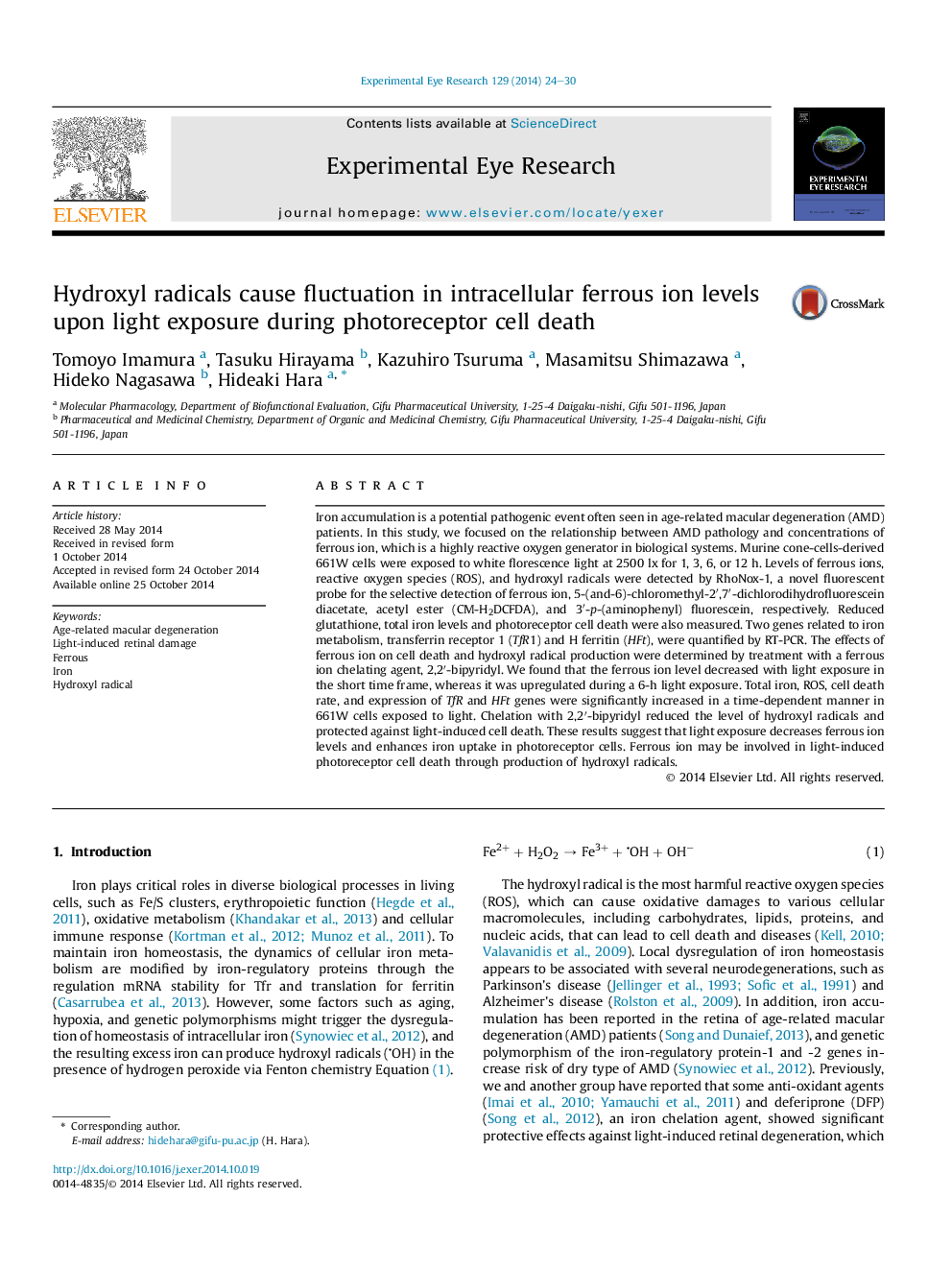| Article ID | Journal | Published Year | Pages | File Type |
|---|---|---|---|---|
| 6196853 | Experimental Eye Research | 2014 | 7 Pages |
â¢Excessive ferrous promoted light-induced cone cell death via hydroxyl radical.â¢Intracellular ferrous ion is changed on light exposed photoreceptor cell.â¢2,2â²-bipyridyl might be a promising new therapeutic strategy for AMD.
Iron accumulation is a potential pathogenic event often seen in age-related macular degeneration (AMD) patients. In this study, we focused on the relationship between AMD pathology and concentrations of ferrous ion, which is a highly reactive oxygen generator in biological systems. Murine cone-cells-derived 661W cells were exposed to white florescence light at 2500 lx for 1, 3, 6, or 12Â h. Levels of ferrous ions, reactive oxygen species (ROS), and hydroxyl radicals were detected by RhoNox-1, a novel fluorescent probe for the selective detection of ferrous ion, 5-(and-6)-chloromethyl-2â²,7â²-dichlorodihydrofluorescein diacetate, acetyl ester (CM-H2DCFDA), and 3â²-p-(aminophenyl) fluorescein, respectively. Reduced glutathione, total iron levels and photoreceptor cell death were also measured. Two genes related to iron metabolism, transferrin receptor 1 (TfR1) and H ferritin (HFt), were quantified by RT-PCR. The effects of ferrous ion on cell death and hydroxyl radical production were determined by treatment with a ferrous ion chelating agent, 2,2â²-bipyridyl. We found that the ferrous ion level decreased with light exposure in the short time frame, whereas it was upregulated during a 6-h light exposure. Total iron, ROS, cell death rate, and expression of TfR and HFt genes were significantly increased in a time-dependent manner in 661W cells exposed to light. Chelation with 2,2â²-bipyridyl reduced the level of hydroxyl radicals and protected against light-induced cell death. These results suggest that light exposure decreases ferrous ion levels and enhances iron uptake in photoreceptor cells. Ferrous ion may be involved in light-induced photoreceptor cell death through production of hydroxyl radicals.
